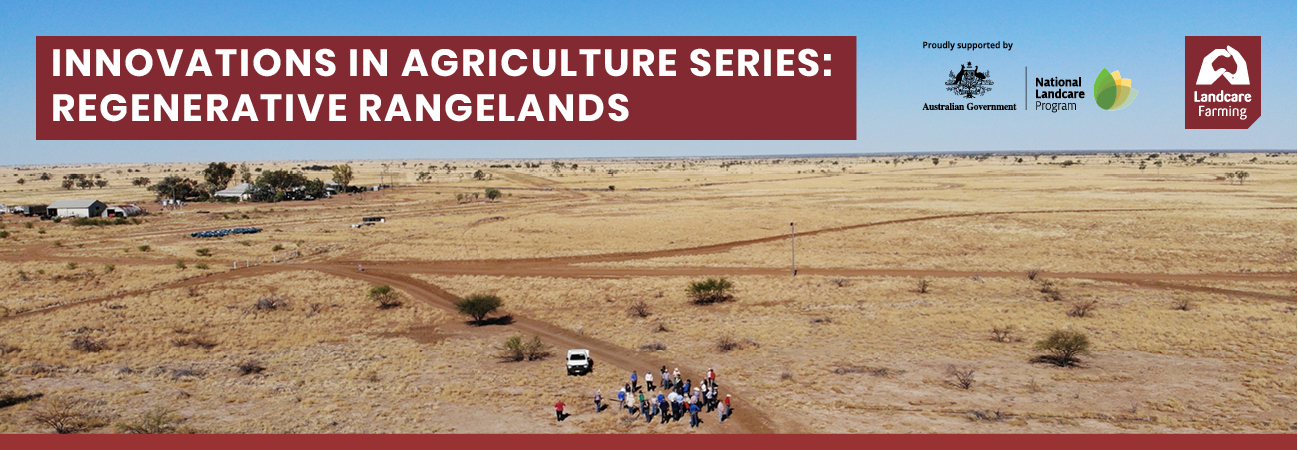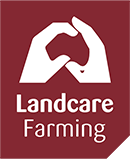
Change in grazing techniques improves drought resilience in the rangeland
Producers in Queensland’s rangelands are using innovative grazing techniques to increase biodiversity, boost productivity and improve drought resilience.
Kylie and Bill Burton run ‘Saltern Creek’, an 8,282ha red meat enterprise near Barcaldine. Nine years of drought, leading to total destocking, resulted in an evolution of the business from 100 percent beef cattle to a mixed sheep, goat and cattle enterprise, grazed using an adaptive, multi-species rotational system.
As seen on satellite data and forage reports from Long Paddock, this move has led to an increase in groundcover to levels not seen in some areas of Saltern Creek during the last 30 years of imagery. While the growth is partially due to increased rainfall, the evolving grazing system has been a contributing factor, as shown in the Burtons data monitoring, which is used to support decision making and analyse the results of their pasture management.
Kylie and Bill have also noticed positive effects on weed reduction and biodiversity by incorporating multiple species of livestock. Their goats have helped to reduce the woody weeds (in particular Prickly Acacia/Vachellia nilotica), and by rotating sheep, cattle and goats through previously unused areas, they have noticed a return of native grasses in those tracts of land, including, Mitchell Grasses (Astrebla lappacea, A. elymoides, and A. pectinata), and Flinders Grass (Iseilema sp.).
With an El Nino likely on the horizon, Kylie is interested to see how better management of their improved ground cover, and ongoing data to support decision making, will support them to navigate through dry periods.
Kylie and Bill are just one example of producers in Australia’s rangelands who are transforming their grazing techniques to improve the productivity and sustainability of their enterprise under the volatile conditions, including low or unreliable rainfall, in their area.
To address these challenging conditions, Longreach producers Mike and Sue Pratt have focused on matching their stocking rate to carrying capacity, and like Kylie and Bill, have made the transition to rotational grazing. But while the Burton’s are much closer to the beginning of their transition, the Pratts dove into practice change several decades ago.
Mike and Sue currently operate a mixed Merino sheep, cattle and goat enterprise on their 14,300ha property ‘Ban Ban’. They have implemented their hard-earned learnings from previous years, including dividing the block into smaller paddocks in order to boost productivity after finding that the quickest way to improve land condition on their property was to increase animal density and incorporate adequate rest for pasture to recover.
“We had 1,500 to 2,000 head of cattle in one mob and moved them every second or third day, so it would take approximately three to four months to do a full circle of all those paddocks” Mike said, referring to the management of Waroona and Bellfield (a larger aggregation of 27,000 ha, that he and Sue previously owned). “It was certainly worth the effort because we transformed a lot of very degraded country into very productive country in a short amount of time.”
Making the most of rainfall is critical in the rangelands, and the Pratts have had success implementing a method of animal-driven simulated shallow ploughing/scarification on their land. This involves putting the cattle into paddocks while the country is wet (after a rain event) to enable the top soil to be disturbed by the cattle’s hooves with the aim of increasing water infiltration, seed-soil contact, and mixing animal manure into the soil, before leaving the paddocks to rest for two to three months. This is a technique currently being trialled throughout rangelands in New South Wales, Queensland and the Northern Territory – with mixed results. It is recommended you reach out to your local soils and pasture professionals before undertaking similar methods on your own property.
Based in the Cunnamulla district, Dusty and Christie Clinch oversee the management of SLM’s 287,000ha property aggregation and use cell grazing. While also undertaking mechanical intervention, including building earth banks and using timber and scrub to build ‘leaky weirs’ that slow water movement across the landscape, as well as using stock to plough and manage the paddocks after rains.
By monitoring their management through grazing management software (MaiaGrazing) and engaging independent consultants including Holistic Management International’s Judi Earl, Dusty and Christie have found that biodiversity and soil health has improved on the property.
Local natural resource management consultant Glenn Landsberg, and Josh Gorringe from Mithaka Aboriginal Corporation, both believe that adaptive grazing techniques are key to maintaining a sustainable enterprise and improving landscapes in the rangelands.
Josh noted that some pastoral businesses in the rangelands are adapting their grazing management practices and promoting regeneration in rangeland pastures by using their livestock in a similar manner to First Nations fire techniques. This has seen stock used as simulated ‘fire-tools’ to graze areas intensively with the view that this will promote regenerative growth after their removal. While Josh said parts of the country still require burning, including areas with large volumes of spinifex growth, if managed effectively, livestock can be used as a helpful tool to keep landscapes healthy.
Barcaldine grazier Jodie Muntelwit, who runs a mixed ecotourism and cattle enterprise on Lara Station agrees. After taking on ownership and management of the property in October 2020, Jodie decided to mob the cattle up* and use rotational grazing to move them through the four existing paddocks which range from 1,000 to 2,500ha.
Jodie grazes each paddock for up to six months so the cattle can graze the pastures as evenly as possible before moving them on and resting the residual. In just three years she has seen a significant boost in groundcover and biodiversity due to her transition and unseasonably high rainfall.
“Now you can barely see the road to drive through it,” Jodie said. “I was actually looking for a lick tub in there and really couldn’t find it. I had to stand on the roof of the Toyota to see it!”
*Mobbing cattle involves combining cattle where possible, keeping the same total number of cattle, but less herds – in Jodie’s case this is 550 breeders, plus a dry mob when feed allows.
This case study was produced as part of the Landcare Farming Innovations in Agriculture Series. Supported by the Australian Government’s National Landcare Program, the Landcare Farming Innovations in Agriculture Series is managed in partnership by Landcare Australia and the National Landcare Network.
More Innovations in Agriculture stories from Regenerative Rangelands Series:



